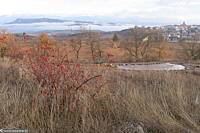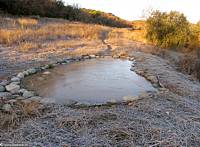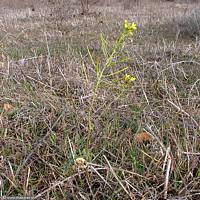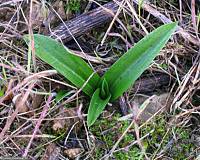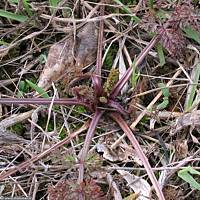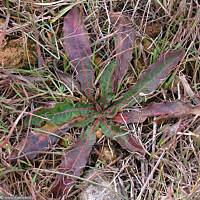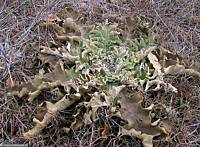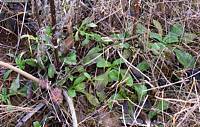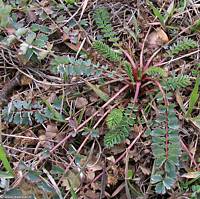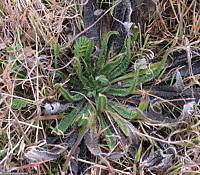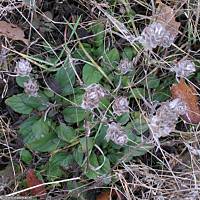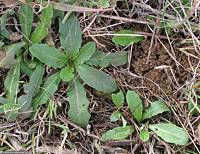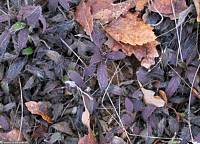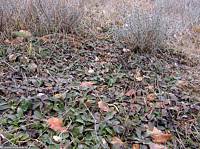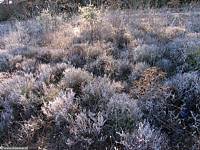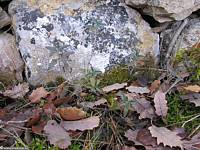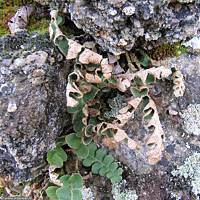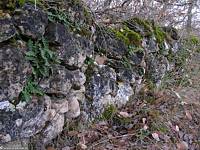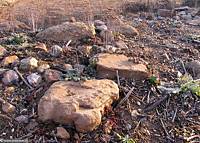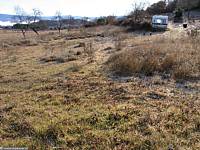|
|
Nature
Switched On
|
|
|
introduction |
2008 January 12 & 13, Saturday & Sunday
Midwinter and it is cold and wet these days. The rain is more than welcome because the autumn was very dry. Very often the mornings show temperatures below zero and low level clouds and fogs. The pond is then mostly frozen showing interesting patterns on the ice surface. The water is of a coffee colour again because of abundant rainfall. |
Overview looking north-east. |
|
13 January 8:52 |
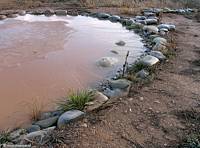
|
The ice seems to have folded around
the stones forming a star like pattern. Photograph taken on 6 January 2008, 9:01. |
|
There are of course very few flowering plants now but Erucastrum nasturtiifolium is a notable exception which is not only flowering but even producing fruit. |
||
|
Perhaps a dozen of this Erucastrum
nasturtiifolium
|
||
|
Surprising was also the early appearance of about five rosettes of Pyramidal Orchid (Anacamptis pyramidalis) in the same place where it flowered last year.
Many other perennials and bi-annuals have formed their rosettes in
the autumn and are showing already some activity, defying frost
and anticipating spring. Here a showcase: |
||
|
Rosette of Pyramidal Orchid in the
half-shade in the centre of the terrain. Sunday 14:48 |
||
|
Both the Wild Carrot (left; Daucus carota)
and Oxtongue Hawkweed (right; Picris hieracioides)
show the red colouring typical for winter conditions. |
Picris hieracioides Sunday 15:08 |
|
|
|
|
At the foot of the withered stems of Small Scabious(Scabiosa columbaria) new plants are sprouting. Sunday 14:52 |
|
Dominantly present the whole year round is Salad
Burnet (Sanguisorba minor). |
Viper's Bugloss (Echium
vulgare). Its scientific and common name seems to refer to the
snake-like
inflorescence
with the styles protruding like the tongue of a viper, but also the
rosette shows a remarkable resemblance to several erecting snakes. Sunday 15:10 |
|
|
|
|
|
|
Exceptionally fresh green leaves of Catsear (Hypochaeris
radicata), ready to flower at the
beginning of March. |
||
|
The red colouring of the leaves of Mouse-ear
hawkweed is not very constant. |
Mouse-ear hawkweed with shrubs of
Common thyme. Sunday 15:47 |
|
|
Other plants are evergreen (or 'evergrey' in the case of Thyme) and have relatively thick leaves, rolled-up leaf edges and lignified stems which stay near the ground. Nevertheless a plant like Wall Germander (Teucrium chamaedrys) seems to do without all these safety measures and has a very fragile look. Its a wonder how it manages to stay green in winter. Perhaps it takes advantage of the heat buffering effect of stone walls.
|
||
|
Alpine Rockrose (Helianthemum oelandicum
). |
Common thyme (Thymus
vulgaris) with a withered plant of Eryngium campestre
on the higher central terrace. Photography taken on 6 Jan 2008 12:29. |
|
|
Wall Germander(Teucrium chamaedrys) in the half shade of Quercus faginea trees near the lower-terrace wall. Notice... |
... the resemblance of the
leaves. Chamaedrys means 'low growing oak'. |
|
|
A special case is the Rusty-back fern (Ceterach
officinarum), whose name is derived from the rust-coloured
scales which completely hide the underside of the leaf |
||
|
This specimen of Rusty-back fern shows some leaves
half-way adapting themselves to the recent rainfalls. |
Wall on the lower southern terrace, covered with moss, lichens
and Rusty-back fern. |
|
|
|
The green of the grass (Bromus diandrus) is competing with the white of the frost. |
|
|
Overview from the entrance towards
the south-east. Sunday 10:13 |
||
|
introduction
|
|
